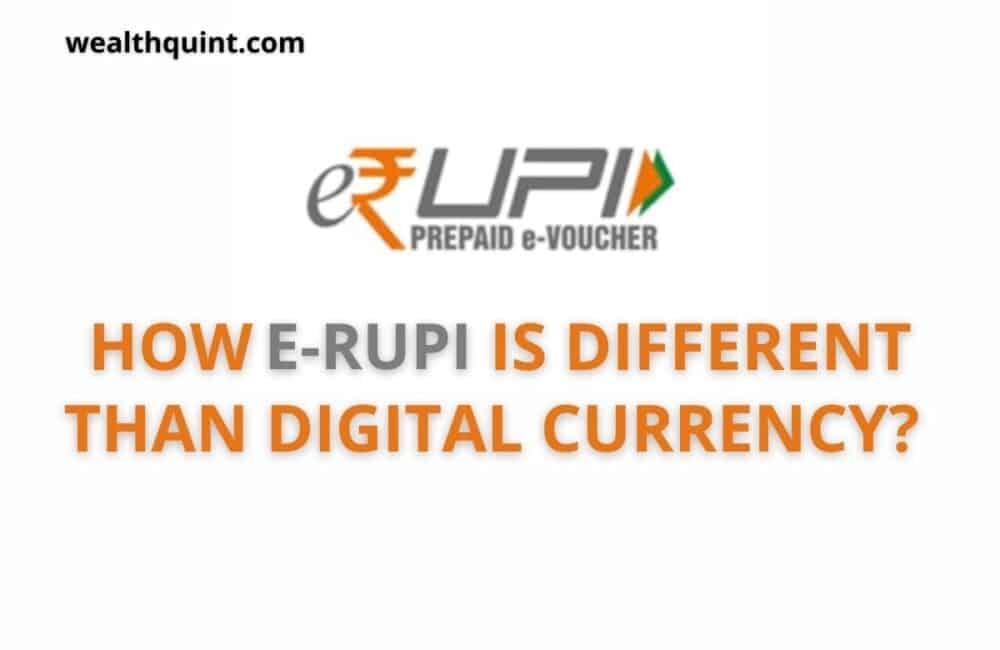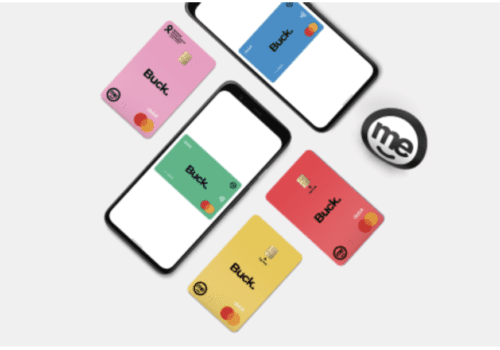e-RUPI is the first step towards the development of a digital currency in India, but it is more of a social service voucher system than a currency to ensure that specific benefits reach eligible beneficiaries promptly and with no discrepancies.
e-RUPI Overview
The Government of India has issued a cashless medium called e-RUPI. The Prime Minister of India, Shri Narendra Modi, has launched this contactless payment medium. Payments can now be made anywhere in the country using e-Rupi Digital Payment.
Mobile users across the country will have the option to pay through an SMS string or QR code. It is important, not to confuse e-RUPI with digital currency, which the Reserve Bank of India considers. It is instead a digital voucher that is person-specific, even purpose-specific.
How E-RUPI Is Different From Digital Currency?
The Indian rupee is designed to be the underlying asset behind e-RUPI, making it a distinct form of virtual currency. A phased implementation of central bank digital currency is also underway at the apex bank. In recent months, RBI deputy governor “T Rabi Sankar” emphasized the importance of CBDCs(central bank digital currency). He says these are “not just desirable from the point of view of their benefits in payments systems, but they may also be necessary to protect consumers from the volatility of private VCs”.
Moreover, India’s growing appetite for digital payments and cryptocurrencies, such as Bitcoin and Ethereum, and an immense scope in terms of currency to GDP, which stands at 14.6%, and safeguarding retail investors from volatile cryptocurrency markets, add to this trend.
To put it simply, digital currencies are nothing more than the rupee, the nation’s current fiat currency. Since our current financial system is only designed to deal with physical currency, it would require a significant law overhaul.
It is different from cryptocurrencies, which are used to purchase goods and services or trade for profit. In addition, it is regulated by the government. The government’s prepaid vouchers will primarily be used for welfare subsidies, at least initially.
As for the introduction of digital currency in India, the Reserve Bank of India (RBI) announced in January this year that it is investigating the idea of a central bank digital currency to facilitate financial inclusion in the country.
China, Europe, and some other countries have been launching virtual cash pilot programs. Still, India has been encouraged to push for pilot projects in wholesale and retail segments by cryptocurrencies such as Facebook’s Diem.
The government is promoting liquidity in the economy by limiting the conversion of these vouchers to cash. Instead, it’s telling you to spend it. Funds used to be sent by the government to beneficiaries that didn’t get used or were used for other purposes mostly.
How Will E-RUPI Work?
e-RUPI is a cashless application. An SMS string or QR code system will be used to send this app to the mobile phones of the general population in the country. The app can be downloaded directly by beneficiaries via SMS or QR code. You don’t need a credit or debit card, a mobile app, or the Internet to shop with this app.
This application can be distributed across the country without sponsoring organizations having to communicate with anyone physically. Prepaid gift vouchers can be used for any purchase. In addition, e-RUPI service will enable service providers and beneficiaries to connect.
Why E-RUPI?
The new system, which was developed by multiple ministries, has the advantage of delivering timely and leakproof transfers to support measures such as mother and fertilizer subsidies, child welfare, drugs and diagnostics, nutritional support, tuberculosis eradication etc. In addition, this system can also be used for the benefit of the private sector, including their employee welfare programs.
What Is The Process For The Issuance Of These E-Rupi Vouchers?
NPCI has developed this system on its UPI platform, which is also linked to many banks. Among the significant components of the plan are the banks to be incorporated as issuing institutions. In addition, e-Rupi system provides nutrition and medicines for maternal and child welfare programs and programs that eradicate TB directly to the beneficiary.
Is E-RUPI Available Now?
Over 1,600 hospitals have already signed up with NPCI to accept its e-RUPI. It is expected that e-RUPI will grow increasingly popular in the coming days, with even businesses using it to deliver employee benefits and SMEs adopting it for business-to-business (B2B) transactions.
What Are The Advantages Of E-RUPI For Consumers?
There is no requirement for the beneficiary to have a bank account with e-RUPI, a significant advantage over other forms of digital payments. You do not have to provide personal information either, as it involves a two-step contactless redemption process.
A second advantage is that e-RUPI can be accessed on basic phones, so people without smartphones or access to the Internet can use it.
Importance Of E-RUPI
The government transfers money directly to beneficiaries via their bank accounts under direct benefit transfers. However, bank accounts are not available to many poor people. Many banks opened accounts as part of the “Jan Dhan Yojana”, but it became evident that not-so-poor people were also opening accounts.
The treatment the poor received from banks was not excellent everywhere either. In addition, welfare funds that are sent to buy food can be redirected to other things. Most of these problems are likely to be eliminated by e-RUPI. Government benefits can be accessed by phone without the need for bank accounts.
Paperwork and signatures are not required. A single e-RUPI transaction takes place once.
The problem of siphoning off benefits is rare. In addition, intermediaries, touts, and queues are avoided. e-RUPI payments must be processed with an OTP at the time of use and thus may be controlled by the intended beneficiary.
Why Should I Care About E-RUPI?
Both taxpayers and individuals will benefit from e-RUPI if it is implemented successfully. You pay taxes so that the government can spend your money on welfare. You would get more bang for your money if you used a targeted and specific system like e-RUPI. With leakages minimized, only intended recipients will receive subsidies. Savings and better spending are the results of this.
A shift from government doles(benefits paid by the state to the unemployed) to economic gains could be indicated by e-RUPI. Despite not being a digital currency, e-RUPI provides a financial benefit to the beneficiary for a specific purpose. Payers have visibility over beneficiaries and help in this manner. If you could keep track of every paisa, you donate online, that would be amazing.
In Which Nations Do E-RUPI Exist?
Several countries have utilized voucher-based welfare incentives, including the United States, South Korea, and other countries. Currently, only a few states in the US implement a voucher-based system for educational institutions to deliver their services.
This government initiative can boost India’s GDP by 14 % with the successful deployment of e-RUPI, which sounds promising for the future of the Indian economy.
Frequently Asked Questions
What Is The Full Name Of E-RUPI?
To facilitate digital payments, Narendra Modi launched an electronic voucher-based digital payment system called “e-RUPI”.
Is E-RUPI An Application?
E-RUPI is neither an application nor a net payment bank application.
Is It Possible To Transfer An E-RUPI Voucher To A Friend?
e-RUPI voucher should only be used by the beneficiary to whom it was assigned.
How Can A Private Company Obtain E-RUPI Vouchers To Distribute To Its Employees?
To obtain e-RUPI vouchers for their employees, private companies or organizations need to contact their banks.
When And How Will The Government Send Beneficiaries E-RUPI Vouchers?
These vouchers will be sent to beneficiaries’ mobile phones via SMS strings or QR codes.



